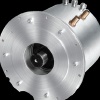Индустриален клъстер "Електромобили" - Учредители:








 |

|

|
| Актуално | За клъстера | Екип | Членове | Документи | Анализи | Услуги | Стани член | Награди | ССЕМ | Контакти |
ИКЕМ - Индустриален клъстер "Електромобили" | Четвъртък, 01.01.2026 | |
|
IMPACT OF HYBRID CARS
The automobile industry is weakening due to the current recession in America. However, car owners, manufacturers, and dealers across the world know that the automobile is an essential part of society. There are millions of cars on the road in the world today, and their inefficiencies are harming the environment and costing the planet its natural resources. The internal combustion engine (ICE) has been used as a means of propulsion for decades. However, it is inefficient, and its byproducts are causing harm to the environment. Issues such as global warming, air quality, unburned hydrocarbons being released into the atmosphere, and the diminishing reserves of oil are all raising concerns and instigating a need for a more efficient means of transportation. Automotive engineers have been designing vehicles for maximum fuel efficiency. However, the internal combustion engine has limited efficiency. Design engineers have introduced several alternatives, including the hybrid electric vehicle (HEV), the use of biodiesel fuel in ICEs, fuel cell technology and purely electric vehicles. The HEV is a relatively old concept but a new technology that is slowly being made available to consumers. The HEV is intended to serve as an alternative to the internal combustion engine powered vehicle, with the hope that the HEV is more efficient and therefore less harmful to the environment. Ultimately, the HEV should start to solve the environmental problems that the present ICE vehicles cannot solve without introducing any equally harmful effects.
There are two main goals of this paper. The first goal is to explain what an HEV is, how it works, and how it is made. The second is to use the information collected from the first goal and draw a conclusion as to whether or not HEVs benefit the environment and society from an engineering point of view. Air pollution is another major factor in the problems facing the ICE, which is also discussed in the first section. The exhaust gas from an ICE contains many chemicals that attribute to the much of the air pollution on the planet. Smog, global warming, depletion of the ozone layer and acid rain are all serious matters harmfully affecting the sustainability of the planet‘s ecosystem. Chemicals such as carbon monoxide (CO), carbon dioxide (CO2), unburned hydrocarbons (HCs), and nitrogen oxides (NOx) are released into the atmosphere from ICEs, and they contribute to the aforementioned types of air pollution. HEVs attempt to reduce the emissions of these harmful chemicals by reducing the use of the ICE in an automobile.
The following section dives into the nuts and bolts of how a hybrid works. There are explanations of the different drive train configurations for an HEV, such as parallel, series, and plug-in. The relationships among the small ICE, the electric motor/generator (M/G), and the battery pack are different in each of the configurations, and it is essential to be familiar with these relationships to truly understand how HEVs work. There are various systems in an HEV that work in conjunction to propel the vehicle, and they are explained in detail. The HEV also has components that ICE vehicles do not have. This section, discussing how hybrids work, The battery pack is an essential component of an HEV, and it is important to understand its complexity. A detailed discussion of the battery pack is important as it is a large source of the HEVs impact on the environment. This section describes the electrochemistry of a rechargeable battery. It also describes the different types of batteries used in HEVs today, such as nickel-metal hydride (NiMH) and lithium ion (Li-ion). The impact that the chemicals have on the environment is also analyzed, as well as the impact of the manufacturing, disposal, and recycling of batteries. |
Продукти 
Комплектна система за задвижване на електромобилиСистемата за електрозадвижване обхваща гама с три основни типоразмера на ел. мощност със съответните компоненти - електромотор и контролер. oще ...Виж всички продуктиАнкета с продължение...
|
|
|
 ЕВРОПЕЙСКИ СЪЮЗ Европейски фонд за регионално развитие Инвестираме във вашето бъдеще |
 |
 ОПЕРАТИВНА ПРОГРАМА „Развитие на конкурентоспособността на българската икономика” 2007-2013 www.opcompetitiveness.bg |
|
Интернет страницата е създадена с финансовата подкрепа на ЕФРР, в рамките на проект „Развитие на Индустриален Клъстер Електромобили” по ДБФП К-02-2/28.09.2011 г. |
|||